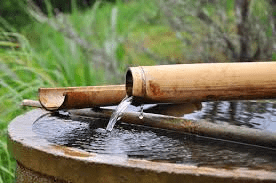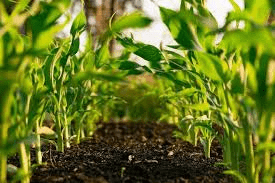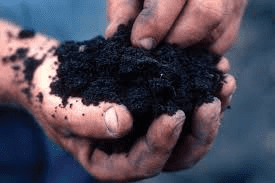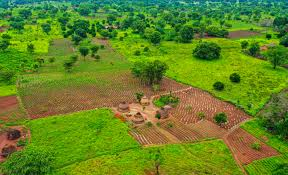Agriculture is the backbone of many economies, providing food and resources essential for life. Adopting best agricultural practices can enhance productivity, sustainability, and environmental health. This article will guide you through essential agricultural practices that can improve your farming operations.
We will cover soil management, water conservation, crop selection, organic farming, pest and disease management, and sustainable farming techniques.
Soil Management Techniques
1. Soil Testing: Regular soil testing helps determine the nutrient levels and pH of your soil. This information is crucial for making informed decisions about fertilization and soil amendments. Conduct soil tests before planting and periodically throughout the growing season.
2. Organic Matter Addition: Adding organic matter like compost or well-rotted manure improves soil structure, water-holding capacity, and fertility. Apply organic matter to the soil before planting and incorporate it into the top 6-8 inches of soil.
3. Cover Crops: Planting cover crops, such as clover or rye, during the off-season helps prevent soil erosion, improve soil health, and enhance nutrient availability. Choose cover crops based on your climate and soil needs.
4. Reduced Tillage: Minimizing tillage helps maintain soil structure, reduce erosion, and promote beneficial microorganisms. Use no-till or reduced-till practices to preserve soil integrity and improve water retention.
5. Soil Erosion Control: Implement erosion control measures like terracing, contour farming, and planting grass strips to prevent soil loss. Erosion control is vital for maintaining soil fertility and preventing sediment runoff into water bodies.
Water Conservation Strategies

1. Drip Irrigation: Drip irrigation delivers water directly to the plant roots, minimizing water waste and improving efficiency. Install drip irrigation systems to conserve water and reduce evaporation and runoff.
2. Rainwater Harvesting: Collecting and storing rainwater for irrigation helps reduce reliance on municipal water sources and saves money. Use rain barrels or larger storage tanks to capture and store rainwater for later use.
3. Soil Moisture Monitoring: Use soil moisture sensors to monitor water levels in the soil. This information helps you apply water more precisely and avoid over-irrigation.
4. Water-Efficient Crops: Choose crops that are well-suited to your local climate and require less water. Drought-resistant varieties can help conserve water and reduce irrigation needs.
5. Mulching: Apply mulch around plants to retain soil moisture, regulate temperature, and reduce evaporation. Organic mulches, such as straw or wood chips, also improve soil health as they decompose.
Crop Selection and Rotation
1. Selecting the Right Crops: Choose crops that are well-adapted to your local climate, soil type, and growing conditions. Research crop varieties that offer high yields and disease resistance for your area.
2. Crop Rotation: Rotate crops each season to prevent soil depletion, reduce pest and disease buildup, and improve soil fertility. Use a rotation plan that includes a mix of legumes, cereals, and root crops.
3. Diverse Planting: Planting a variety of crops can improve soil health, reduce pest problems, and increase resilience to climate variability. Aim for a mix of crops that complement each other and offer diverse benefits.
4. Seasonal Timing: Plan your planting and harvesting schedules according to local climate and seasonal patterns. Understanding the right timing for each crop helps optimize growth and yield.
5. Cover Crops and Green Manure: Use cover crops and green manure to improve soil fertility and structure between main crop cycles. These practices help replenish nutrients and enhance soil health.
Read Also: Powdery Mildew: Description, Damages Caused, Control and Preventive Measures
Organic Farming Practices

1. Organic Fertilizers: Use organic fertilizers, such as compost, manure, or bone meal, to enrich the soil naturally. Organic fertilizers improve soil health and provide nutrients without synthetic chemicals.
2. Natural Pest Control: Implement natural pest control methods like introducing beneficial insects, using neem oil, or applying insecticidal soap. Avoid synthetic pesticides to maintain an organic farming system.
3. Crop Diversity: Grow a diverse range of crops to improve soil health and reduce pest and disease pressures. Companion planting, where certain plants are grown together for mutual benefit, can also enhance crop productivity.
4. Soil Conservation: Practice soil conservation techniques such as reduced tillage, cover cropping, and mulching to maintain soil health and prevent erosion.
5. Certification and Compliance: Follow organic farming standards and obtain certification if you plan to sell your products as organic. Certification ensures that your practices meet specific organic guidelines.
Pest and Disease Management
1. Integrated Pest Management (IPM): IPM combines cultural, biological, and chemical methods to manage pests and diseases. Monitor pest populations, use natural predators, and apply targeted treatments when necessary.
2. Regular Inspections: Regularly inspect your plants for signs of pests and diseases. Early detection allows for timely intervention and prevents widespread damage.
3. Resistant Varieties: Choose plant varieties that are resistant to common pests and diseases in your area. Resistant varieties can reduce the need for chemical treatments and improve crop health.
4. Sanitation Practices: Maintain clean and healthy growing environments by removing diseased plants, sanitizing tools, and avoiding overcrowding. Good sanitation helps prevent the spread of pests and diseases.
5. Physical Barriers: Use physical barriers like row covers, netting, or traps to protect plants from pests. These barriers can help reduce pest damage and minimize the need for chemical control.
Sustainable Farming Techniques
1. Agroforestry: Integrate trees and shrubs into your farming system to provide shade, windbreaks, and additional resources. Agroforestry improves biodiversity, enhances soil health, and supports sustainable land use.
2. Permaculture: Apply permaculture principles to design farming systems that mimic natural ecosystems. Permaculture emphasizes sustainability, self-sufficiency, and the efficient use of resources.
3. Renewable Energy: Utilize renewable energy sources, such as solar or wind power, to reduce your farm’s carbon footprint. Renewable energy can power irrigation systems, farm equipment, and other operations.
4. Waste Reduction: Implement waste reduction practices by composting plant residues, recycling materials, and minimizing food waste. Proper waste management contributes to a more sustainable farming operation.
5. Ecosystem Services: Enhance ecosystem services such as pollination, natural pest control, and soil fertility by creating habitats for beneficial organisms. Supporting ecosystem services improves overall farm productivity and health.
Technological Innovations in Agriculture
1. Precision Farming: Precision farming uses GPS, sensors, and data analytics to optimize field management. This technology allows farmers to apply inputs like water, fertilizers, and pesticides precisely where needed, reducing waste and improving yields.
2. Drones: Drones are used for aerial surveys, crop monitoring, and mapping. They provide real-time data on crop health, soil conditions, and pest activity, allowing farmers to make informed decisions and manage resources more effectively.
3. Automated Machinery: Tractors, harvesters, and other machinery equipped with automation technology can perform tasks like planting, weeding, and harvesting with minimal human intervention. Automated systems increase efficiency and reduce labor costs.
4. Smart Irrigation Systems: Smart irrigation systems use weather data, soil moisture sensors, and automated controls to optimize water use. These systems ensure that crops receive the right amount of water, reducing waste and conserving resources.
5. Farm Management Software: Farm management software integrates data from various sources, such as weather forecasts, soil sensors, and market prices. It helps farmers plan and manage their operations more efficiently by providing insights and tracking performance.
Read Also: 15 Medicinal Health Benefits Of Lysimachia clethroides (Gooseneck Loosestrife)
Fertilization and Soil Enrichment

1. Soil Testing and Analysis: Regular soil testing helps determine nutrient levels and pH, guiding fertilization decisions. Use soil tests to tailor fertilizer applications to specific soil needs and avoid over-fertilization.
2. Nutrient Management Plans: Develop a nutrient management plan based on soil tests and crop requirements. This plan should include the type, amount, and timing of fertilizer applications to maximize efficiency and reduce environmental impact.
3. Organic Fertilizers: Organic fertilizers, such as compost and manure, improve soil health and provide essential nutrients. They enhance soil structure and increase microbial activity, promoting long-term soil fertility.
4. Slow-Release Fertilizers: Slow-release fertilizers provide nutrients gradually, reducing the risk of leaching and runoff. These fertilizers improve nutrient availability over time and minimize environmental pollution.
5. Cover Crops and Green Manure: Planting cover crops and using green manure between main crops enriches the soil with organic matter and nutrients. These practices improve soil structure, enhance water retention, and reduce erosion.
Livestock Management Practices
1. Nutritional Management: Provide balanced diets for livestock based on their specific needs and growth stages. Use feed additives and supplements to ensure optimal nutrition and health.
2. Animal Health Monitoring: Implement regular health checks and vaccinations to prevent disease outbreaks. Use technology like electronic tags and health monitoring systems to track animal health and behavior.
3. Waste Management: Properly manage livestock waste to prevent environmental pollution and improve soil fertility. Use waste as a resource by composting or applying it to fields as organic fertilizer.
4. Housing and Shelter: Design and maintain appropriate housing for livestock to ensure their comfort and well-being. Good housing protects animals from extreme weather and reduces stress and disease.
5. Breeding Programs: Develop effective breeding programs to improve livestock genetics and productivity. Select breeding stock based on traits like disease resistance, growth rate, and reproductive performance.
Economic Considerations in Farming
1. Cost Analysis: Conduct a thorough cost analysis of farming operations, including input costs (seeds, fertilizers, pesticides) and labor. Understanding costs helps in budgeting and financial planning.
2. Market Research: Research market trends and demand for your products. Stay informed about pricing, consumer preferences, and competition to make informed decisions about what to grow or produce.
3. Financial Management: Implement sound financial management practices, including budgeting, record-keeping, and financial forecasting. Use accounting software or consult with financial advisors to manage your farm’s finances effectively.
4. Risk Management: Identify and manage risks associated with farming, such as weather conditions, market fluctuations, and disease outbreaks. Consider insurance options and risk mitigation strategies to protect your investment.
5. Diversification: Diversify your farm operations to reduce reliance on a single crop or livestock type. Diversification can provide additional income streams and reduce financial risk.
Challenges and Solutions in Modern Agriculture
1. Climate Change: Climate change affects weather patterns, water availability, and crop yields. Adaptation strategies include developing drought-resistant crop varieties, improving water management practices, and adjusting planting schedules.
2. Soil Degradation: Soil degradation reduces fertility and productivity. Solutions include practicing conservation tillage, using organic matter, and implementing crop rotation to maintain soil health.
3. Water Scarcity: Water scarcity impacts irrigation and crop growth. Implement water-saving technologies, such as drip irrigation and rainwater harvesting, and manage water use efficiently.
4. Pest and Disease Management: Pests and diseases can damage crops and reduce yields. Use integrated pest management (IPM) practices, including biological control, resistant varieties, and careful monitoring to manage pests and diseases effectively.
5. Economic Pressures: Farmers face economic pressures from fluctuating market prices and rising input costs. Improve financial management, explore cost-saving technologies, and seek government support or subsidies to mitigate economic challenges.
Conclusion
Technological innovations, effective fertilization and soil enrichment, proper livestock management, and sound economic considerations are essential for successful farming. By addressing challenges and implementing solutions, farmers can enhance productivity, sustainability, and profitability. Stay informed about the latest advancements and best practices to thrive in modern agriculture and contribute to a more resilient and efficient farming industry.
Read Also: Potato Farming Guide – 7 Tips to Grow Sacks Full of Potatoes
4o mini
Frequently Asked Questions
We will update this section soon.

